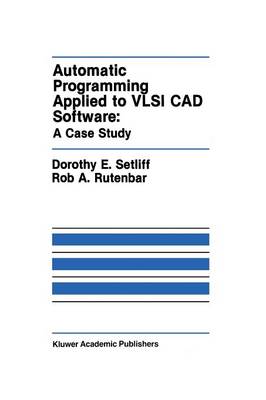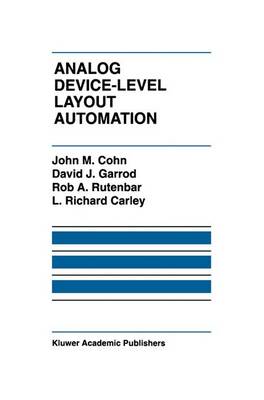The Springer International Series in Engineering and Computer Science
2 primary works
Book 101
Automatic Programming Applied to VLSI CAD Software: A Case Study
by Dorothy E Setliff and Rob A. Rutenbar
Published 31 May 1990
This book, and the research it describes, resulted from a simple observation we made sometime in 1986. Put simply, we noticed that many VLSI design tools looked "alike". That is, at least at the overall software architecture level, the algorithms and data structures required to solve problem X looked much like those required to solve problem X'. Unfortunately, this resemblance is often of little help in actually writing the software for problem X' given the software for problem X. In the VLSI CAD world, technology changes rapidly enough that design software must continually strive to keep up. And of course, VLSI design software, and engineering design software in general, is often exquisitely sensitive to some aspects of the domain (technology) in which it operates. Modest changes in functionality have an unfortunate tendency to require substantial (and time-consuming) internal software modifications. Now, observing that large engineering software systems are technology dependent is not particularly clever. However, we believe that our approach to xiv Preface dealing with this problem took an interesting new direction. We chose to investigate the extent to which automatic programming ideas cold be used to synthesize such software systems from high-level specifications. This book is one of the results of that effort.
Book 263
Analog Device-Level Layout Automation
by John M. Cohn, David J. Garrod, Rob A. Rutenbar, and Rick Carley
Published 31 January 1994
This book presents a detailed summary of research on automatic layout of device-level analog circuits that was undertaken in the late 1980s and early 1990s at Carnegie Mellon University. We focus on the work behind the creation of the tools called KOAN and ANAGRAM II, which form part of the core of the CMU ACACIA analog CAD system. KOAN is a device placer for custom analog cells; ANANGRAM II a detailed area router for these analog cells. We strive to present the motivations behind the architecture of these tools, including detailed discussion of the subtle technology and circuit concerns that must be addressed in any successful analog or mixed-signal layout tool. Our approach in organizing the chapters of the book has been to present our algo rithms as a series of responses to these very real and very difficult analog layout problems. Finally, we present numerous examples of results generated by our algorithms. This research was supported in part by the Semiconductor Research Corpora tion, by the National Science Foundation, by Harris Semiconductor, and by the International Business Machines Corporation Resident Study Program. Finally, just for the record: John Cohn was the designer of the KOAN placer; David Garrod was the designer of the ANAGRAM II router (and its predeces sor, ANAGRAM I). This book was architected by all four authors, edited by John Cohn and Rob Rutenbar, and produced in finished form by John Cohn.

